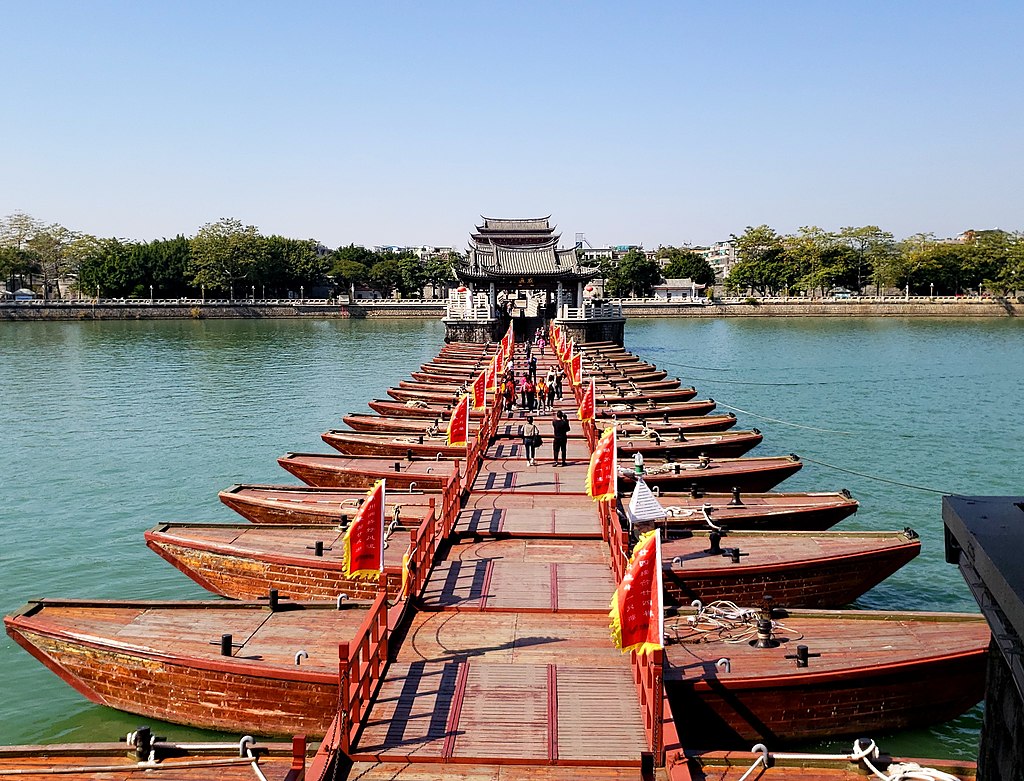GUANGDONG IS WELL KNOWN as the heartland of the Cantonese-speaking peoples, with their love of barbecued pork and dialects from the root known as Yue. But there has always been an area of the province which has been different on multiple levels. We’re referring to the area known as Chaoshan (潮汕地區).
The area is considered distinctive because the language was different, as was the culture, and so was the food. About 300 kilometers to the northeast of Cantonese-dominated Hong Kong, the Chaoshan area is known as the place where many famous east Asian people trace their roots – from top businessman Li Ka-shing to political figures in Thailand and actors across the region.
In this article, we’re going to look at Chaoshan’s cuisine, which is unusual. Even the tea is special – Chaoshan tea is sometimes called “the espresso of tea”: it is thick and strong and “knocked back” in small servings.
GOOD FENG SHUI
Chaoshan (潮汕地區) today consists of the cities Chaozhou (潮州), Jieyang (揭陽) and Shantou (汕頭). The area’s geographic position is striking. With mountains behind it and the sea in front, it is a perfect position in terms of feng shui.

But on a practical basis, it’s also a good setting for food lovers: the area gets food resources from both land and the sea.
We can image that for thousands of years, these people have been living on poultry and livestock from the mountains, and other foods from the seafront, with its natural harbor: seafood from the fishermen and more exotic foods from travelling traders.
THE POET’S SURPRISE
The earliest historical record of Chaoshan cuisine (潮州菜) is a mention in a poem from the Tang Dynasty (618 to 907). The writer was poet Han Yu (韓愈), known as one of the“Eight Masters of the Tang and Song”(唐宋八大家).

During his banishment from the capital to Chaozhou, he considered his new home to be remote, but not isolated in the way northern people thought it would be. And he also was fascinated by the food. He listed several examples of Chaozhou cuisine items in his writing, such as conpoy, oysters and eels. He also mentioned his experience learning to cook from local people: how to add salt and orange to upgrade the seafood flavours. This indicated that at that time, Chaoshan residents had already begun to cook seafood by braising it in sauce. The cuisine is today famous for its thick sauces.
THICK SAUCES
Today, “Lou Mei” (滷味), the most famous style of Chaoshan cooking, is clearly derived from the ancient recipes all the way back to the Tang Dynasty.
Why did local people maintain this culinary method for thousands of years? Because they believed thick sauces could efficiently preserve meat and seafood.
The braising sauce is the essential part of Lou Mei, in which the herbs are mostly imported from faraway places. These include anise (八角) from the Western Regions (西域); Sichuan peppers (花椒) from Southwestern China; and tsaoko (草果) from the highlands of Vietnam.
Long hours of braising make the fragrance of the herbs go deeply into the sauce. People stew the prepared duck, goose, pork and seafood in the sauce until they are thoroughly cooked and then then take them out of the source. After the food cools down, they are returned to the sauce and stewed again just before being served. This system locks in the natural flavors and makes the meat juicier.
LION-HEAD GOOSE
Lion-head goose, a special breed in Southern China, is the most important popular dish served in the Lou Mei style. Compared with ordinary goose, the lion-head goose is heavier and more tender. Usually, a common goose can be sold after three months of breeding. But it will take two to three years to breed a lion-head goose. They are considered ready when they are 16 to 17 kilograms in weight. The price is consequently much higher. While a whole roast goose in Hong Kong can be head for a few hundred Hong Kong dollars, a lion-head goose can cost more than a thousand.

Diners did the pieces of lion-head goose Lou Mei in a seasoning mix containing garlic and rice vinegar, which is quite similar to the recipe that Han Yu recorded.
BEEF BALLS
Beef ball is also a warmly welcomed cuisine in Chaozhou recipes. While people elsewhere are content with chilled beef stored in fridges, Chaozhou residents prefer fresh beef. Famous for its smooth and chewy texture, the Chaozhou beef ball is still 100 per cent handmade today.

In front of a butcher shop, you will see several strong men striking beef of four to five pounds over a thousand times to change the meat fibre to the desired texture.
The boiling pot is set beside the chopping board, ready to cook the beef balls as soon as possible. The whole procedure, including slaughtering, striking and cooking, is completed in only half a day to guarantee the freshness and tenderness of the beef. Chaozhou people have various ways to enjoy beef balls, such as stewing them in a hot pot, or serving them with soup and rice noodles with chilli sauce.
Influenced by their Chaoshan ancestors or cousins, many Hong Kong people have a strong liking for Chaozhou cuisines because of the natural flavors and high-quality ingredients. Fortunately, the popularity means that there are a range of restaurants serving the food – so everybody can hope to find one that suits their pocket.
Image at the top by Weibo on Unsplash
